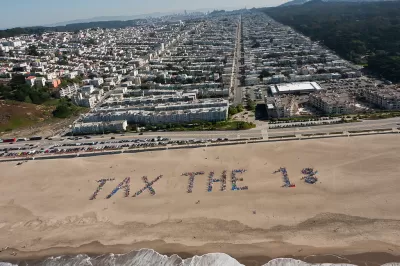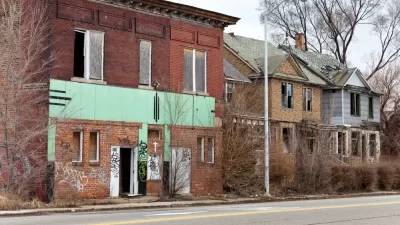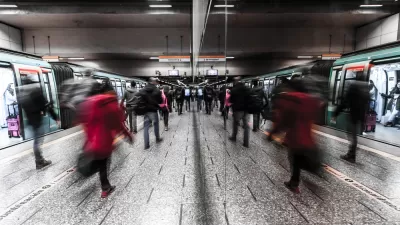While the vast majority of cities saw an increase—or no decrease—in neighborhood inequality since 1990, nearly 30 regions became more equal. But paper equality can be problematic when the rich simply up and left town.

The Urban Institute's Rolf Pendall discusses results from his recent study of neighborhood inequality rates between 1990 and 2010. As one might guess, most regions fared poorly. "But there are exceptions to every rule: in 29 of the nation's 214 commuting zones (CZs) with over 250,000 residents, neighborhood inequality went down from 1990 to 2010."
However, only in some areas did incomes actually rise across the board. "In 21 CZs, inequality fell because of shared growth, with income rising significantly in both top and bottom neighborhoods. [...] In eight CZs, inequality dropped because economic restructuring undermined the regional economies to such an extent that middle- and upper-income households either left town, retired, or took pay cuts."
Self-segregation by the rich results in segregated poverty, and, perversely, regional equality. Pendall says we need more diverse metrics to evaluate economic outcomes. He asks, "Do places and nations prevent or reduce material hardship? Do they foster economic mobility over the life course and generations? Do they assure the economic security of people who are just getting by and resilience for those whose lives are disrupted?"
FULL STORY: Is falling inequality always a good thing?

Alabama: Trump Terminates Settlements for Black Communities Harmed By Raw Sewage
Trump deemed the landmark civil rights agreement “illegal DEI and environmental justice policy.”

Study: Maui’s Plan to Convert Vacation Rentals to Long-Term Housing Could Cause Nearly $1 Billion Economic Loss
The plan would reduce visitor accommodation by 25% resulting in 1,900 jobs lost.

Planetizen Federal Action Tracker
A weekly monitor of how Trump’s orders and actions are impacting planners and planning in America.

Wind Energy on the Rise Despite Federal Policy Reversal
The Trump administration is revoking federal support for renewable energy, but demand for new projects continues unabated.

Passengers Flock to Caltrain After Electrification
The new electric trains are running faster and more reliably, leading to strong ridership growth on the Bay Area rail system.

Texas Churches Rally Behind ‘Yes in God’s Back Yard’ Legislation
Religious leaders want the state to reduce zoning regulations to streamline leasing church-owned land to housing developers.
Urban Design for Planners 1: Software Tools
This six-course series explores essential urban design concepts using open source software and equips planners with the tools they need to participate fully in the urban design process.
Planning for Universal Design
Learn the tools for implementing Universal Design in planning regulations.
Caltrans
Smith Gee Studio
Institute for Housing and Urban Development Studies (IHS)
City of Grandview
Harvard GSD Executive Education
Toledo-Lucas County Plan Commissions
Salt Lake City
NYU Wagner Graduate School of Public Service




























